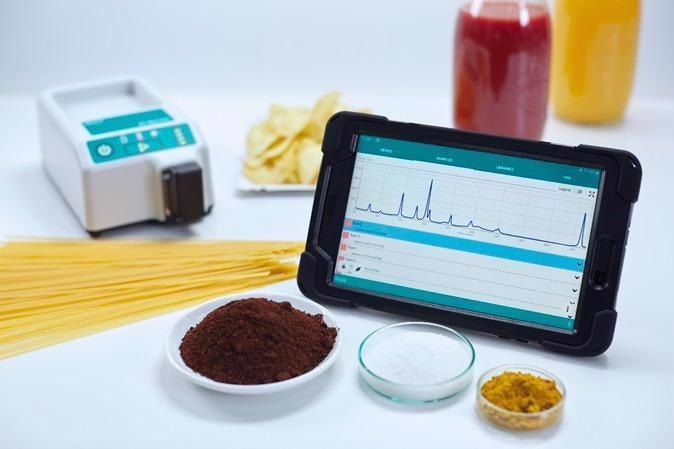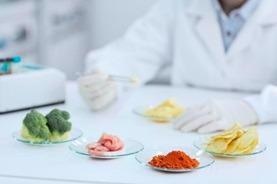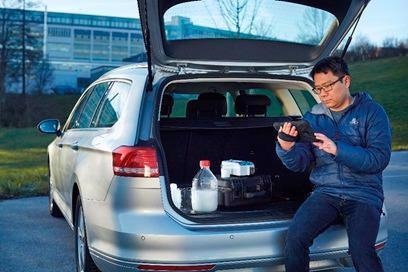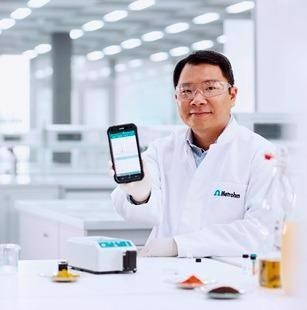Protect Consumer Safety by Detecting Additives, Adulterants and Pesticides
Trace detection of food adulterants traditionally involved laboratory analysis, using techniques such as HPLC and GC/MS - Methods that require extensive sample preparation and technical knowledge. The inherent complexity of food matrices poses a challenge for the detection and identification of contaminants.
MISA from Metrohm is a revolutionary instrument, designed for field use by non-technicians to simplify food testing - from sample preparation, analysis, interpretation to sharing results.

Image Credit: Metrohm Middle East FZC
MISA utilizes SERS (Surface Enhanced Raman Scattering), a form of Raman spectroscopy coupled with nanostructured substrates, offering enormous Raman signal enhancement. Raman spectroscopy has already been used for food testing for some interesting application, which only look at the inherent bulk qualities of a food:
- identifying counterfeit honey
- assessing the quality of olive oils
- discriminating between very similar sugars
- distinguishing between grass-and grain-fed beef

Image Credit: Metrohm Middle East FZC
When combined with nanostructured SERS materials, Raman spectroscopy can now identify trace levels of harmful contaminants, such as pesticides and food additives down to parts per million / billion (ppm or ppb) levels.
To successfully detect trace analytes, the additives or contaminants must interact strongly with a SERS substrate. Fortunately, many food additives of interest display this behavior intrinsically.
Metrohm has identified over 80 different common food adulterants,* including dyes, herbicides, pesticides, fungicides and common food additives that can be successfully detected at trace levels with our MISA instrument and SERS substrates. That is just the beginning.
At Metrohm we recognize the importance of simplified sample preparation methods for dealing with demanding food matrices.
We currently offer several «real world» food safety application references to illustrate our technology capabilities (click to download):

Image Credit: Metrohm Middle East FZC
*Additionally, reference spectra for other analytes-of-interest can be studied- contact your Metrohm regional team.
Each Application Note includes reference spectra and simplified experimental protocol, including a special section titled «Field Test Protocol». The Field Test Protocol guides any user through a complete experiment using only MISA and the tools included in ID Kits.
ID Kits for MISA contain dedicated SERS substrates, in addition to the basic tools required for field testing. When ID Kits are used with automated Operating Procedures that are included on MISA, food safety testing is accessible to anyone, anywhere.

Image Credit: Metrohm Middle East FZC
We acknowledge that food is different around the world, adulterants vary, and concerns may be localized. At Metrohm, we are ready to help you combat food adulteration and food contamination by providing you with the technology and knowledge to identify different contaminants in your food.
With our easy-to-use instrumentation, comprehensive analyte libraries and simplified testing methods, we will help you protect the integrity of our food.

Image Credit: Metrohm Middle East FZC
Learn more here: Food quality testing with the MISA portable SERS │ Metrohm Raman
Metrohm Middle East FZC (MME) based out of Sharjah, UAE is the Regional Support Centre for Metrohm AG (Switzerland) which is responsible for sales, service and calibration of lab & process analytical instruments from the following countries –
UAE, KSA, Kuwait, Bahrain, Oman, Qatar, Egypt, Jordan, Lebanon, Iraq, Bangladesh, Pakistan, Sri Lanka, Ethiopia, Ghana, Sudan, Syria, Yemen, Somalia, Iran, Cyprus, Malta, Eritrea, Djibouti & Afghanistan.

This information has been sourced, reviewed and adapted from materials provided by Metrohm Middle East FZC.
For more information on this source, please visit Metrohm Middle East FZC.